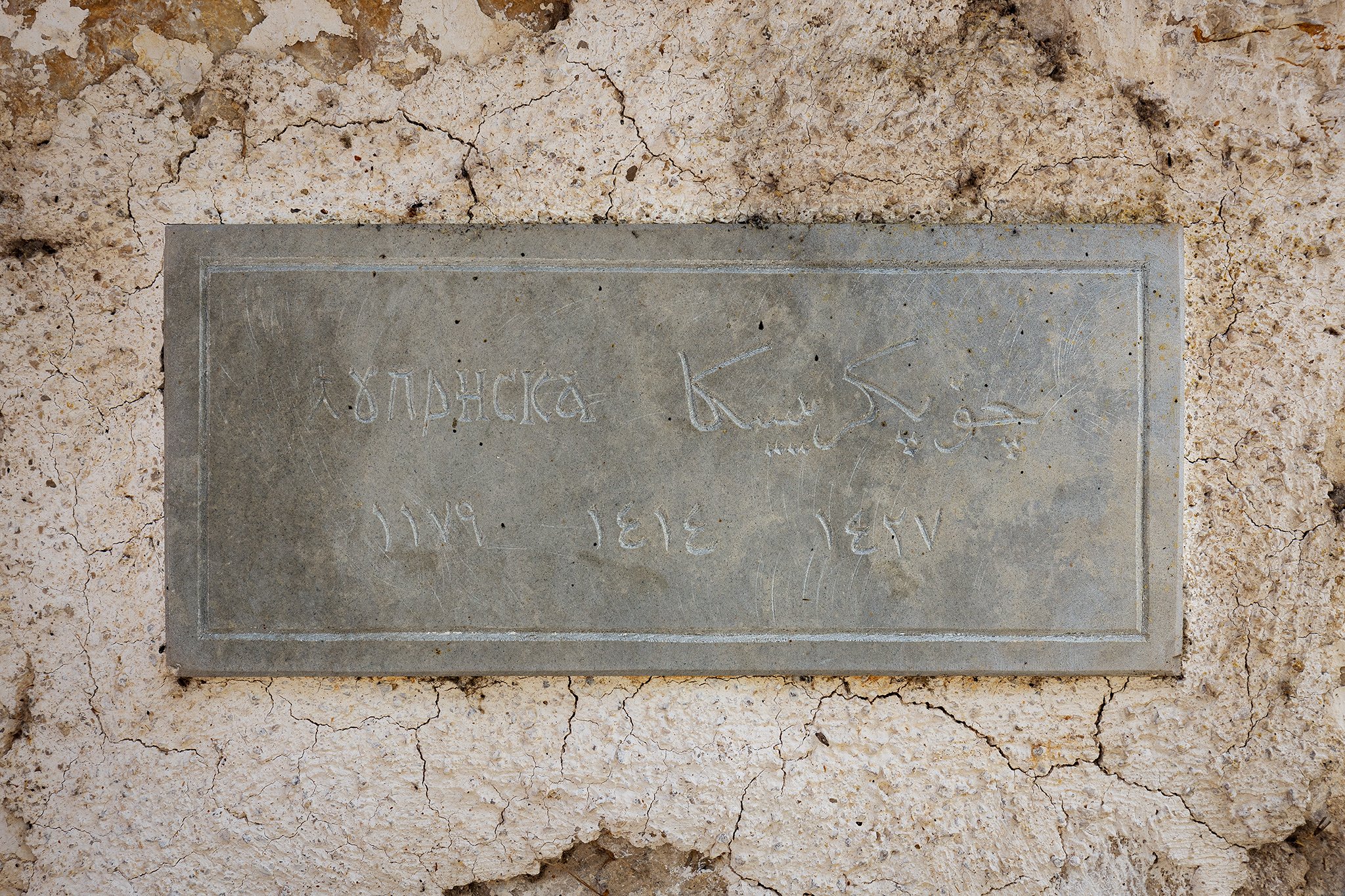
TWO ALPHABETS AT THE ENTRANCE OF THE ĆUPRIJSKA MOSQUE IN STOLAC
Author: Ekrem Tucaković, PhD, Riyasat of the Islamic Community in Bosnia and Herzegovina • Photo: Mirza Hasanefendić
Arebica is a specific alphabet created by Bosnia's entry into the Ottoman-Islamic cultural circle. It is an Arabic alphabet adapted to the phonetic system of the Bosnian language.
Hadži Alija Hadžisalihović Mosque, or the Bridge Mosque, in Stolac was built in 1736, on the left bank of the Bregava River, immediately next to the Inat (Spite) Bridge. Pursuant to the decision of the Commission to Preserve National Monuments of 2003, it was proclaimed a national monument of Bosnia and Herzegovina.
The monument consists of: the mosque, the maktab, a courtyard, courtyard walls, canals which lead water from the Bregava River through the courtyard, a cistern, a shadirvani, three cypress trees and centuries-old elm tree in the courtyard next to the Bregava.
By the time of building, the Bridge (Hadži Alija Hadžisalihović) Mosque is the third oldest mosque in Stolac. The mosque is an endowment of hadži Alija, a son of Hasan, of whom there are no reliable data in written sources. From vakufnama (deed of endowment) we learn that the waqif was a native of the town of Stolac in Herzegovina Sanjak and that, at the time of building the mosque and the maktab, he lived in Cairo in Egypt, where he was a military official and a military commander. We also learn that he died in Cairo before his endowments in Stolac were completed, and that he was buried there at a cemetery. It happened in about 1734.
The mosque was built of cut rubble and was covered with hipped roof. The original roofing consisted of stone slabs. Interior of the mosque has dimensions of 8.76x7.97 m. Total exterior dimensions of the mosque with the porch are: 10.34x12.37 m. On the facades of the mosque, windows are set in two horizontal rows, which make up the upper and the lower belt of window openings. The mosque minaret is 18.13 m high.
In the courtyard of the Hadži Alija Hadžisalihović Mosque there is a cistern; it is not known when it was built or whose endowment it is. Canals, brought from the Bregava, used to flow in front of the mosque and water from them was used for ablution. The maktab was built on the southwest side of the building ensemble. Cypress trees, three of which have been preserved, are also constituent part of the mosque ensemble.
In August 1993 the mosque was torn to the ground by members of the Croatian Defense Council, and it was renewed in 2010.
Source:
Komisija za očuvanje nacionalnih spomenika Bosne i Hercegovine: https://web.archive.org/web/20160407193656/http://www.kons.gov.ba/main.php?id_struct=6&lang=1&action=view&id=582
